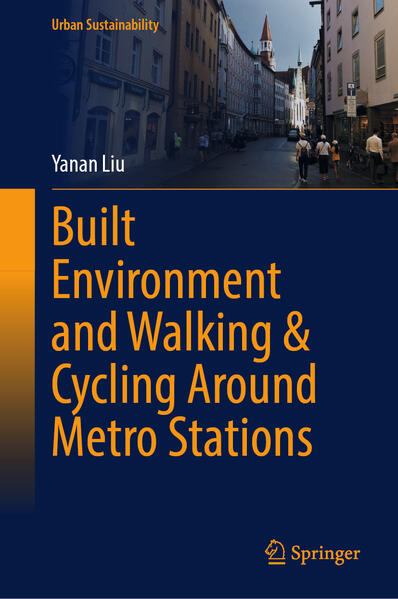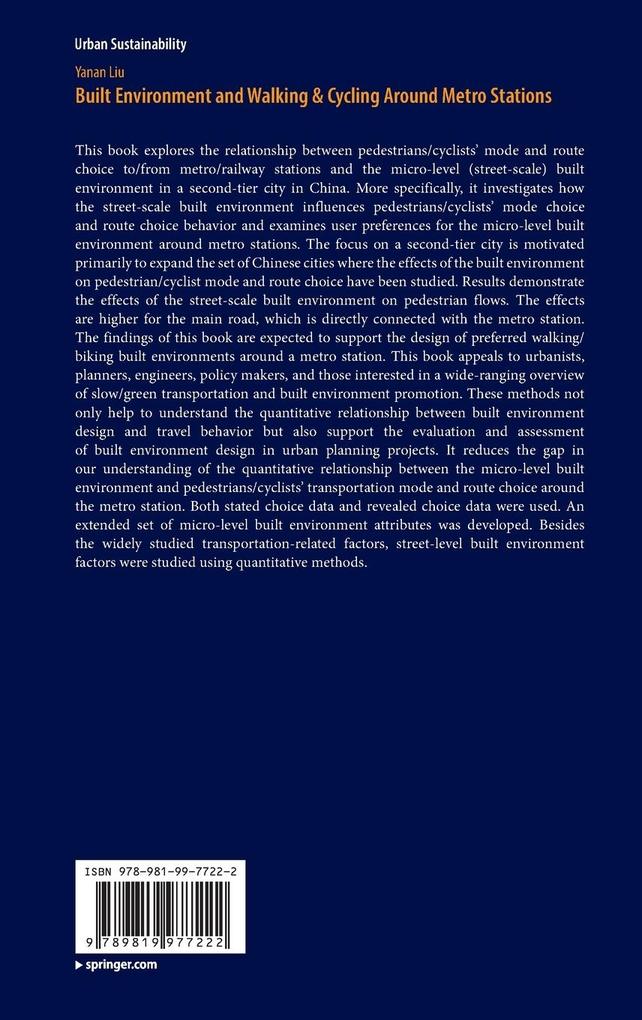
Zustellung: Di, 03.06. - Fr, 06.06.
Versand in 1-2 Wochen
VersandkostenfreiBestellen & in Filiale abholen:
This book explores the relationship between pedestrians/cyclists' mode and route choice to/from metro/railway stations and the micro-level (street-scale) built environment in a second-tier city in China. More specifically, it investigates how the street-scale built environment influences pedestrians/cyclists' mode choice and route choice behavior and examines user preferences for the micro-level built environment around metro stations. The focus on a second-tier city is motivated primarily to expand the set of Chinese cities where the effects of the built environment on pedestrian/cyclist mode and route choice have been studied. Results demonstrate the effects of the street-scale built environment on pedestrian flows. The effects are higher for the main road, which is directly connected with the metro station. The findings of this book are expected to support the design of preferred walking/biking built environments around a metro station. This book appeals to urbanists, planners, engineers, policy makers, and those interested in a wide-ranging overview of slow/green transportation and built environment promotion. These methods not only help to understand the quantitative relationship between built environment design and travel behavior but also support the evaluation and assessment of built environment design in urban planning projects. It reduces the gap in our understanding of the quantitative relationship between the micro-level built environment and pedestrians/cyclists' transportation mode and route choice around the metro station. Both stated choice data and revealed choice data were used. An extended set of micro-level built environment attributes was developed. Besides the widely studied transportation-related factors, street-level built environment factors were studied using quantitative methods.
Inhaltsverzeichnis
Chapter 1. Introduction. - Chapter 2. Transportation mode choice and built environment around metro stations. - Chapter 3. Pedestrians preferences on the street-scale built environment in a stated choice experiment. - Chapter 4. Pedestrians route choice and the street-scale built environment. Chapter 5. Cyclists preferences on the street-scale built environment in a stated choice experiment. - Chapter 6. Preference heterogeneity of cyclists on the street-scale built environment. - Chapter 7. Application: Simulation model of pedestrian flows in the re-design of built environment around metro stations. Chapter 8. Conclusion.
Produktdetails
Erscheinungsdatum
15. November 2023
Sprache
englisch
Auflage
1st edition 2023
Seitenanzahl
144
Reihe
Urban Sustainability
Autor/Autorin
Yanan Liu
Verlag/Hersteller
Produktart
gebunden
Abbildungen
XIII, 127 p. 25 illus., 13 illus. in color.
Gewicht
389 g
Größe (L/B/H)
241/160/14 mm
ISBN
9789819977222
Entdecken Sie mehr
Bewertungen
0 Bewertungen
Es wurden noch keine Bewertungen abgegeben. Schreiben Sie die erste Bewertung zu "Built Environment and Walking & Cycling Around Metro Stations" und helfen Sie damit anderen bei der Kaufentscheidung.











